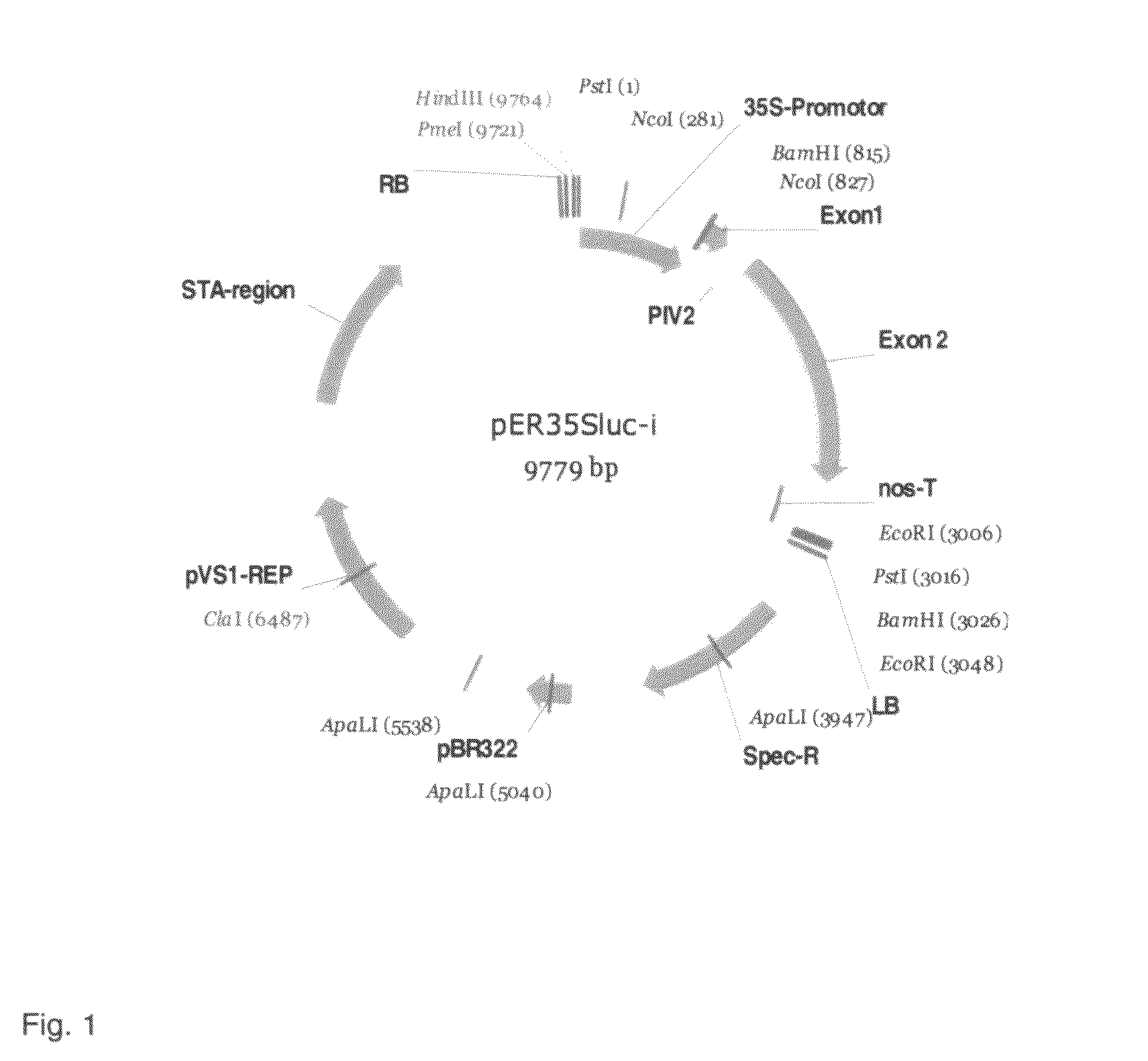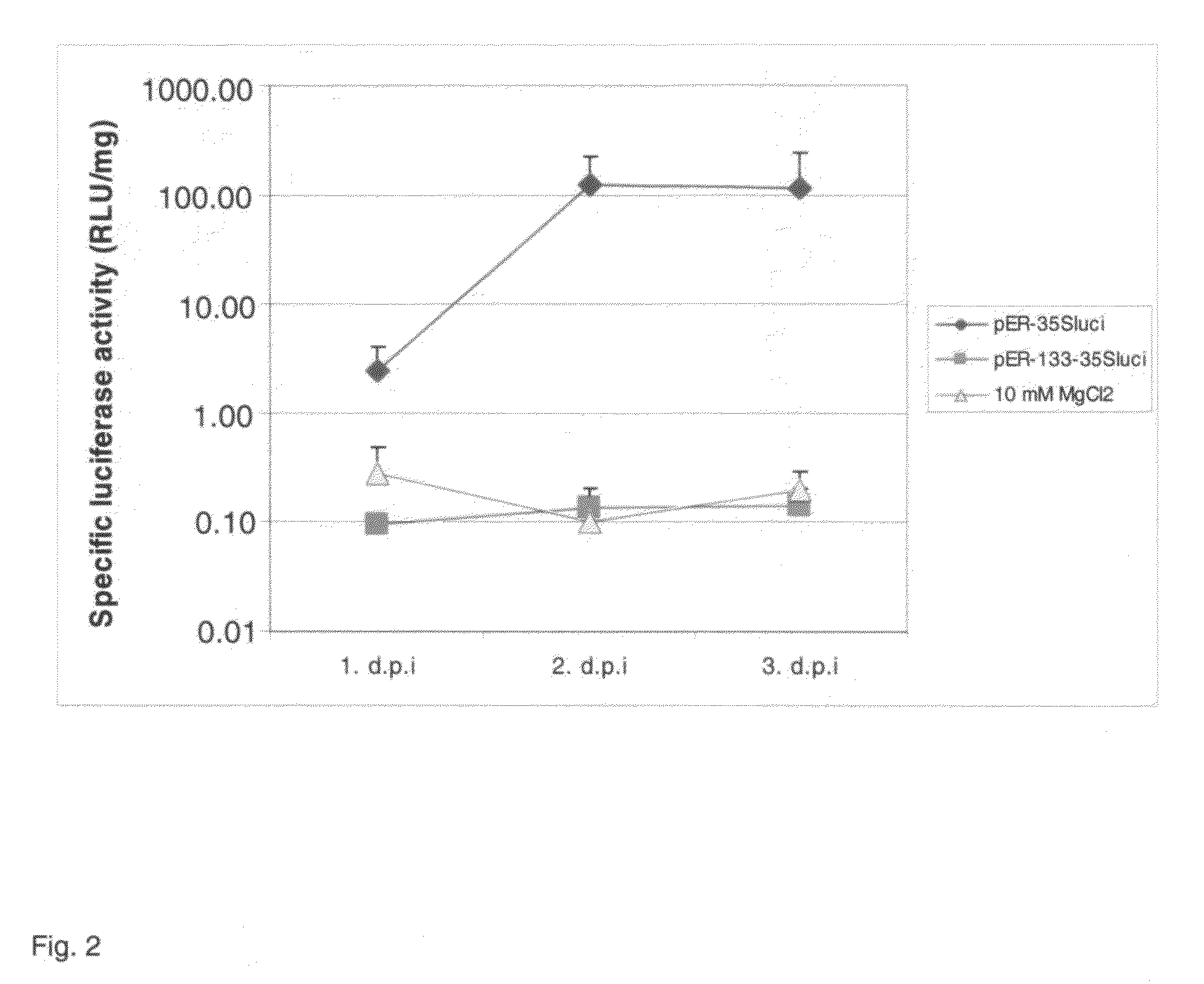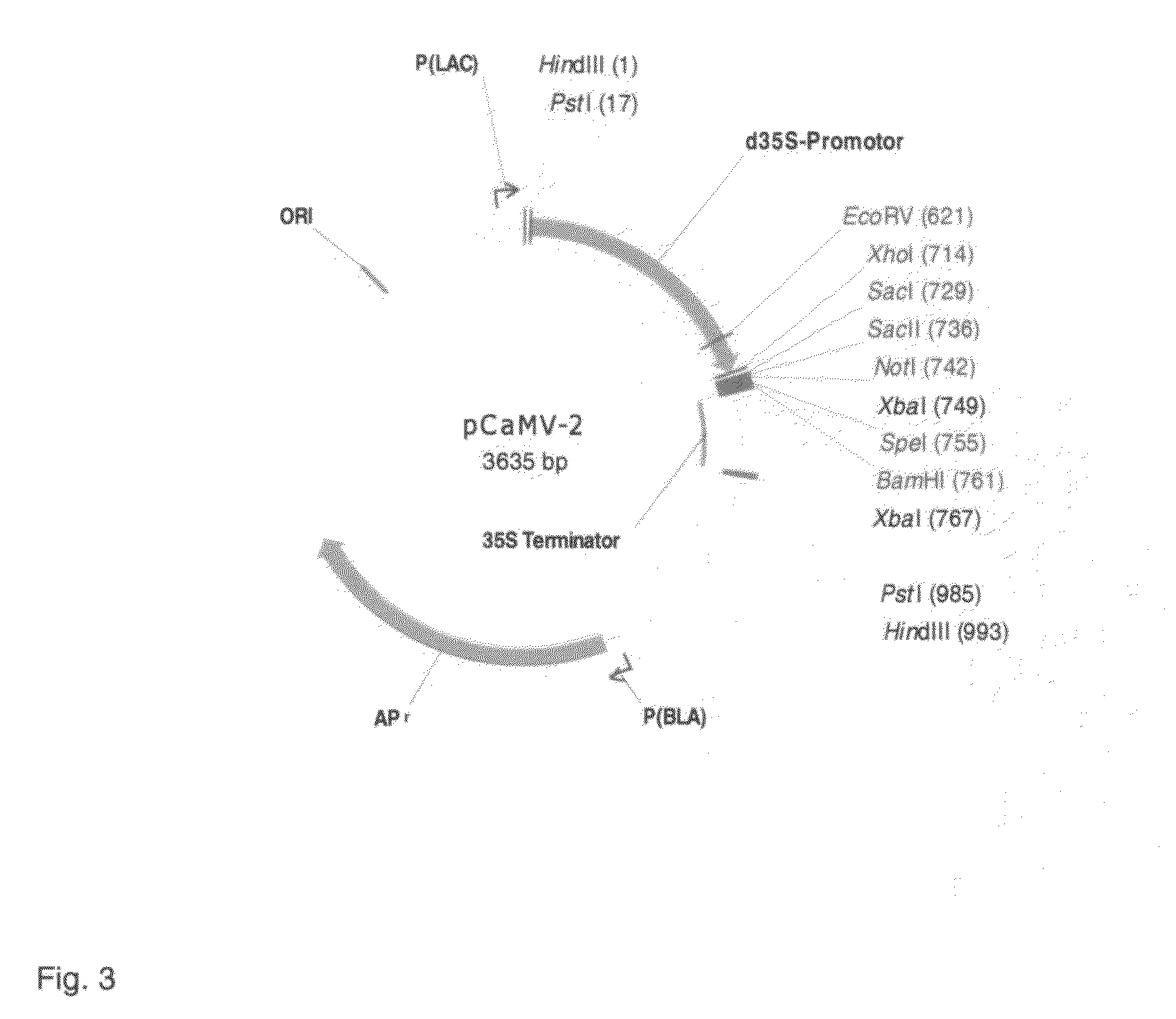Isolated nucleic acids encoding autoactivated resistance proteins and uses thereof
a technology of autoactivation and nucleic acids, which is applied in the field of isolated nucleic acids encoding autoactivated resistance proteins, can solve the problems of cell death, compromise the quality of harvested products, etc., and achieve the effect of modifying the defensive capability of a plant, negatively affecting the agronomic characteristics of the plant, and reducing the production cost of the plan
- Summary
- Abstract
- Description
- Claims
- Application Information
AI Technical Summary
Benefits of technology
Problems solved by technology
Method used
Image
Examples
examples
Verification of Initiation of Rapid Resistance Reaction in Sugar Beet Leaves by Overexpression of the Gene BvKWS3—133
[0071]The transient overexpression of the full-length cDNA clone of the gene BvKWS3—133 in sugar beet leaves by Agrobacterium tumefaciens triggers a rapid cell death without visible necrosis formation. The cDNA-clone BvkWS3—133 was combined with the d35S promoter and inserted in the binary vector pER-34Sluci (FIG. 1). The resulting vector was given the designation pER133-34Sluci. The vector pER-34Sluci and pER133-34Sluci were transformed in the Agrobacterium strain C58C1 (An 1987). Positive agrobacteria were cultured for the transient expression in 50 ml LB-medium with 100 mg / ml spectinomycin and 20 μM acetosyringon for 4-5 hours. Subsequently, the bacteria were centrifuged and the precipitate was taken up in a solution of 10 mM MgCl2, 10 mM MES, 100 μM acetosyringon and adjusted to a bacteria density of OD600=0.1. The bacteria suspension was allowed to rest for 2-3 h...
PUM
| Property | Measurement | Unit |
|---|---|---|
| temperature | aaaaa | aaaaa |
| pH | aaaaa | aaaaa |
| pH | aaaaa | aaaaa |
Abstract
Description
Claims
Application Information
 Login to View More
Login to View More - R&D
- Intellectual Property
- Life Sciences
- Materials
- Tech Scout
- Unparalleled Data Quality
- Higher Quality Content
- 60% Fewer Hallucinations
Browse by: Latest US Patents, China's latest patents, Technical Efficacy Thesaurus, Application Domain, Technology Topic, Popular Technical Reports.
© 2025 PatSnap. All rights reserved.Legal|Privacy policy|Modern Slavery Act Transparency Statement|Sitemap|About US| Contact US: help@patsnap.com



